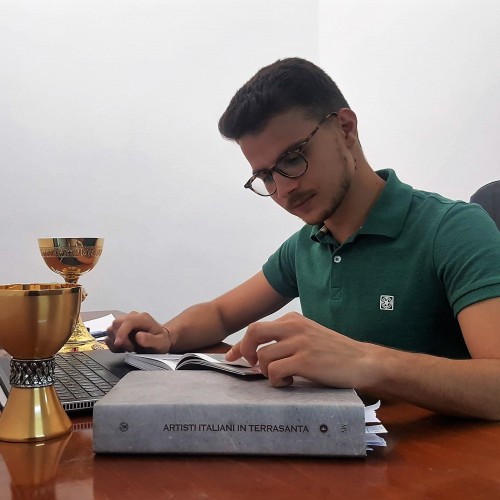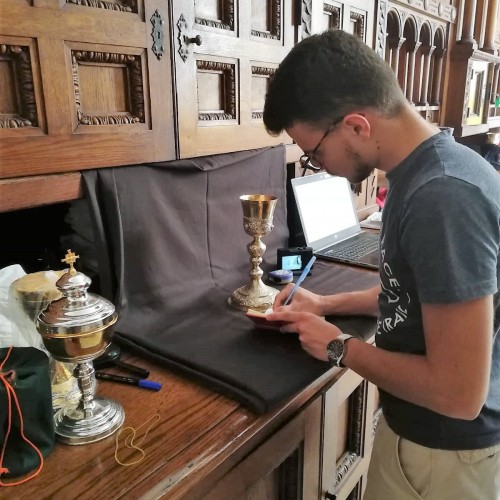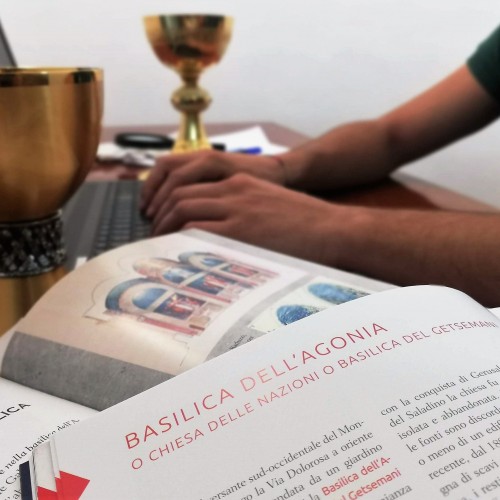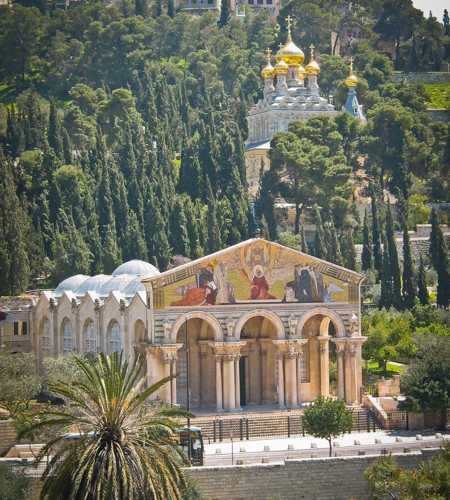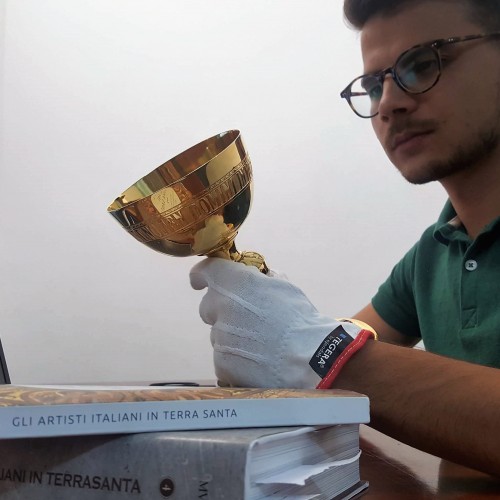Opportunities and challenges for a volunteer from the Terra Sancta Museum: cataloguing at Gethsemane
Michele Colaianni, 23 years old, graduate in Cultural Heritage Sciences and art history student at the University of Bari Aldo Moro, has continued the project of cataloging the objects at the sanctuary of Gethsemane between June and July 2019. The sanctuary, built in the first half of the 20th century on the site of the Agony of Christ before the Passion, was already the subject of a preliminary cataloging but needed a more thorough and complete assessment. Here, Michele shares his experience as an art historian in the field.
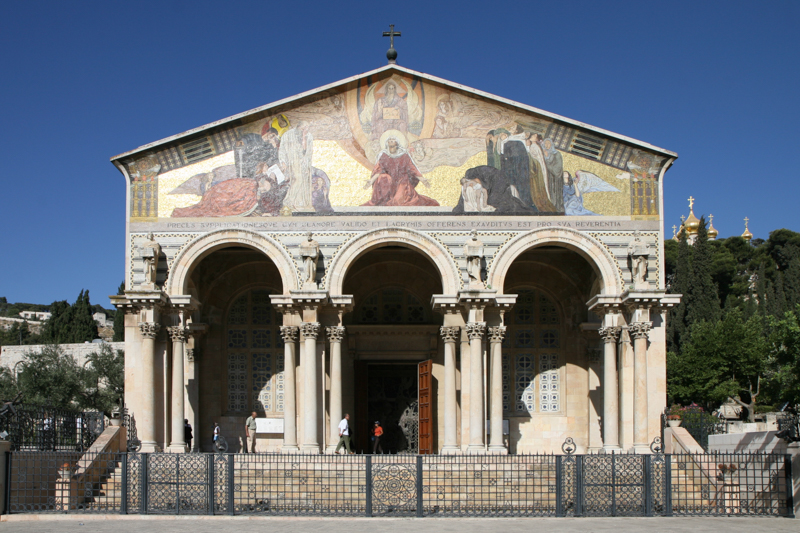
Gethsemane. Church of the Agony (of All Nations). Facade of 1924 Basilica (Barluzzi)
How did you become involved in cataloging the objects at Gethsemane?
I became involved in this project through my internship with the Cultural Heritage Office of the Custody of the Holy Land. As I am studying art history, I was interested in the techniques and methodology used for cataloging. The first time I went to Gethsemane was with Eleonora, my mentor, who introduced me to Brother Benito, the guardian of the sanctuary with whom I established a collaborative relationship. We had the same goal to document the objects preserved, and his availability during our months of work was fundamental and fruitful.
How was the cataloging carried out?
My work began with a photographic campaign that focused on three chalices already included in the catalog, but which needed further research. For example, the chalice donated by Franz Joseph of Austria had not yet been photographed; it was essential to do so because it will be on display at the Terra Sancta Museum. These photos were requested by the scholar Paulus Rainer, curator at the Kunsthistoriches Institute in Vienna who is working on a survey of the Custody’s jewelry. Then I continued with an analysis of the objects which included, in addition to measurements and detailed description, the iconographic identification of the subjects represented – when there are any – and finally with finding references to the object in a bibliography, if available. These steps are fundamental to be able to hypothesize a place of production and a date for the object studied.
What were your main references?
I consulted two sources extensively on the activity of Italian artists in the Holy Land (Gianluca Minicolini, Alfonso Panzetta (a cura di), Gli artisti italiani in Terra Santa. Percorsi ed itinerari di arte contemporanea nei luoghi sacri e Bruno Mantura, Anna Maria Damigella, Gian Maria Secco Suardo (a cura di), Artisti italiani in Terrasanta. Pittori, scultori e artigiani al lavoro nei santuari di Antonio Barluzzi. 1914-1955. Ed.) The Basilica of Gethsemane is, in fact, a modern sanctuary built with funds from around the world. For this reason, it is also called the Basilica of Nations, but the artists who worked there were mainly Italian.
What interested you about photographing goldware?
In addition to giving an overview of the object, the details, and punches, if any, must be photographed. The hallmark, affixed by the goldsmith at the time of fusion, gives us a lot of information about the name of the goldsmith, the place and the year of production. I had never dealt with goldsmithing before and now, thanks to my conversations with experts and my research, I have learned a lot about the techniques of goldsmithing and the history of the objects.
What other objects were cataloged?
Other liturgical objects, the interior and exterior furnishings of the sanctuary including the gate, the door, and the enclosure of the Stone of Agony made by Gherardi in 1934, and the liturgical vestments kept inside the sacristy that testify to the devotion of many notables from the early 20th century.
Do you recall any object that was particularly interesting in your work?
A special opportunity for the study was presented by a chalice on whose foot and cup are depicted twelve figures that I assumed were the apostles. I really wanted to be able to identify all of them and I stubbornly searched for them, but unfortunately, three more remain to be identified.
Another interesting piece is the enclosure of the Stone of Agony, a work rich in references to the Gospel. It was commissioned by the Custody of the Holy Land and donated by Australia, as the inscription at the base indicates: “AVSTRALIA DONAVIT, 1934.” The history of the enclosure is problematic in that the commission arrived several years earlier but only in ‘34 was it possible to complete it.
You are about to go home after spending three months in Jerusalem. Do you think this cataloging was useful for your training?
Absolutely. It was useful in many ways, including learning about different research techniques and the chance to handle various artworks and discover their history from scratch, without a bibliography, because the books I mentioned previously do not speak of such gifts and objects. It was obviously very stimulating for me as a student, I never had the opportunity to do such research before. I am also happy to have contributed through my work to the possibility of having today an overview of the objects that are kept in the sanctuary to facilitate the conservation of this heritage. Not to mention the enrichment of my own cultural background…now I know practically everything about Gethsemane!

